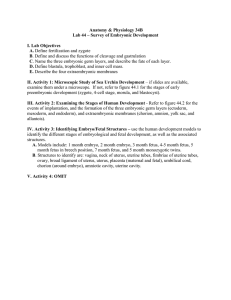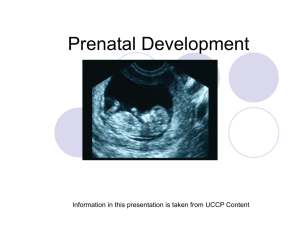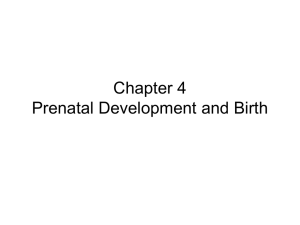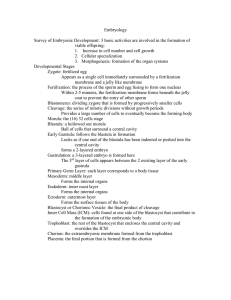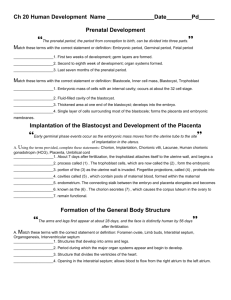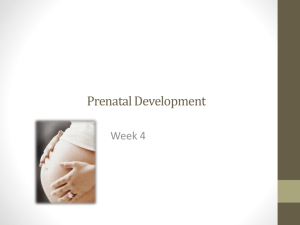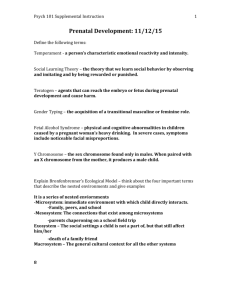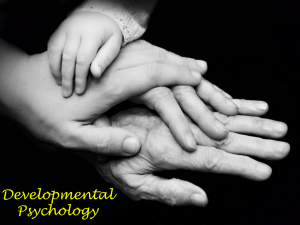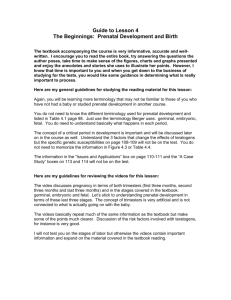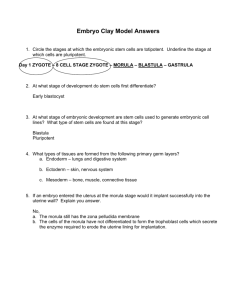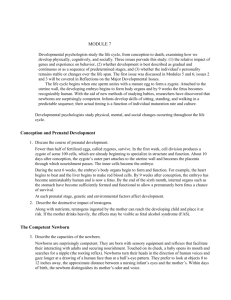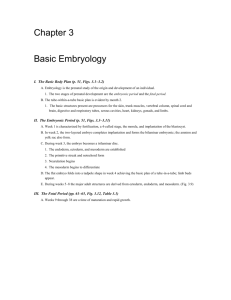Prenatal Development
advertisement
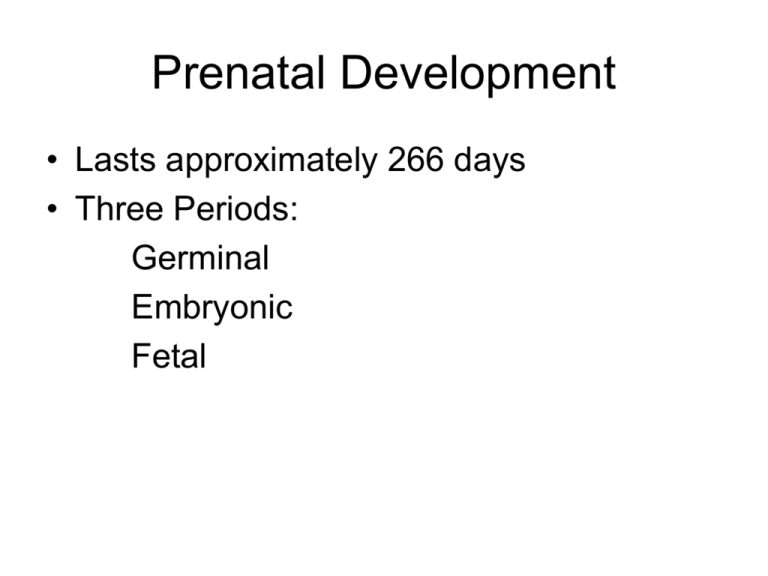
Prenatal Development • Lasts approximately 266 days • Three Periods: Germinal Embryonic Fetal Germinal Period • First two weeks after conception • Includes the creation of the zygote, continued cell division, and the attachment of the zygote to the uterine wall Germinal Period • Blastocyst: groups of cells that will eventually become the embryo • Implantation of the zygote to the uterine wall occurs 6 days after conception Embryonic Period • Occurs three to eight weeks after conception • Blastocyst attaches to uterine wall; now called an embryo • Cell differentiation intensifies, support systems for the cells form, and organs appear Embryonic Period • Organogenesis: name given to the process of organ formation during the first two months of prenatal development Life Support Systems • Amnion: bag-like structure that contains a clear fluid in the which the embryo floats • Chorion: membrane that surrounds the amnion and attaches villi to the uterine lining to gather nourishment; becomes the placenta • Placenta: tissue fed by blood vessels from mother and connected to the embryo • Umbilical Cord: connects the placenta to the embryo Fetal Period • 9th week of pregnancy until birth • Proliferation of neurons • Neuron differentiation: depends on migration • Stem cell: unspecified cell • Age of viability Arousal Patterns • Relationship between fetal physiology and infant temperament Prenatal Testing • • • • Ultrasound Sonography Chorionic Villus Sampling Amniocentesis Maternal Blood Screening Infertility and Reproductive Technology • 10 to 15 percent of US couples experience infertility • Infertility: inability to conceive after 12 months • May be caused by man or woman • Options for addressing infertility
